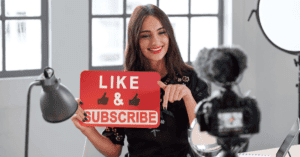Parental controls can be used as a safety net to protect your child from content they are not ready to see but it’s best to make sure they know ‘why’ these are being used. Our experts give insights on ways you can make the most of them by getting children bought in.
How can you help kids see parental controls as positive?
Parents can and should encourage their children to see that privacy settings are a positive thing that will protect the child’s digital identity and reputation. One way to help children understand privacy is to have them imagine that post, image, text or tweet placed on a billboard and set in the middle of the schoolyard for everyone to see. Privacy settings can also provide an additional layer of protection and prevent children from receiving inappropriate content.
The best parent controls, like those on the Switch or the Circle with Disney device, give parents easy visibility of their children’s online activity and not just ways to lock it down. This means that a healthier perspective on parental controls is not as a tool to restrict dangers but as the first step towards a deeper conversation with children about what limits are appropriate and helpful.
If parents are having regular conversations with their children about their use of the internet, technology and social media, it is much easier to demonstrate the benefits of parental controls and privacy settings. Parents can explain that they want their children to be able to explore and learn online, but that there must be balance and boundaries.
What should you remember about parental controls?
Parental controls may be useful in helping parents – and their children – find that balance.
Parental control software and apps are a technical support with functionalities ranging from time, activity and content restrictions to monitoring and tracking tools. Depending on the age and maturity of a child, certain parental controls may be more appropriate than others.
Parental controls can be very useful for some parents, but they should be considered as just one measure of prevention and protection. Children still need to be able to explore the internet, technology and social media in order to take advantage of online opportunities, encounter risks and build resilience.
To apply any parental controls effectively you need to understand how games are played by your children, and where they may be vulnerable. Playing games together as a family not only lets you get to grips with this but also mitigates some of the risks.
As you engage with different gaming content, a little research goes a long way. Use sites like PEGI or the Family Gaming Database to gain a broader understanding of the dangers and opportunities that gaming content presents.
From here you are in a position to agree an intelligent and layered approach to the parental settings. This means you can apply parental controls for specific users that relate to the different ages of users in your family. You can also apply limits based on time of day as well as who else might be in the room with the current player.
Whatever approach you take, play games together with your children, research the parental settings available on your devices and agree limits with the whole family. This is sure to establish safe and sensible gaming habits in your children.
Tips to set parental controls
Parents can introduce parental controls into their everyday family life by involving children in their application and use. They can show what the control will limit and block and explain why it is important.
- Consider first, how you can be the ‘parental control’ with regular involvement in your child’s digital life.
- Ask “how was your day today,” followed by “how was your online day” today, or some similar variation.
- Remember that many technical parental controls can be circumvented by a simple online search for “how to disable parental controls”.
Parental controls can be appropriate at different times of a child’s development – and especially as parents’ guide their children in the development of executive functioning and self-regulation skills.
Remember that parental controls are only good on your child’s device and will not restrict content viewed from a classmates’ device.
- Never give more information that the site needs to create an account
- Just because you can post to the public, doesn’t mean that you should.
- Social media refine privacy settings, so check in regularly.
- Your child’s school should have appropriate privacy settings in school software and resources as well.
- Perform regular privacy check-ups by reviewing all devices, including your own.
- Get into the habit of checking the safety centres on social media platforms and websites.
- Remind your children that even if they use privacy settings and restrict to their friends only, that their friends can still share that information in other ways. A better rule of thumb is to not post inappropriate content and images in the first place.







